Mike Grunwald’s latest excoriation of biofuels is a retread of the usual attack on farm-based fuels – based on the disproven notion that growing energy diverts food into fuel tanks and leads to the conversion of pristine lands. Taking a page from the climate denialism playbook, Mr. Grunwald relies on intuitive but fictional links, simplifies complex relationships into single variable deductions, and omits key information to build out his false narrative about U.S. biofuels. Ironically, many of the same influencers embracing Mr. Grunwald’s essay decried similar tactics deployed against electric vehicles just days before. Ideally, neither of these specious columns would make it through the journalistic integrity screens at The Guardian or The New York Times. But clicks are gold and sensationalism drives traffic. So, what did Mr. Grunwald get wrong?
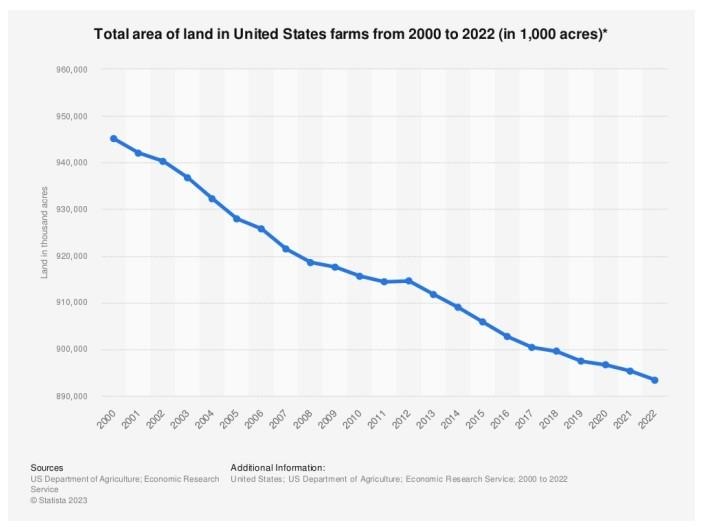
The U.S. “agricultural footprint” is shrinking (not growing). The linchpin to Mr. Grunwald’s thesis is that biofuels “increase greenhouse gas emissions through the conversion of carbon-rich forests, wetlands and grasslands into farmland, expanding our agricultural footprint while shrinking nature’s.” The problem with this argument is the U.S. agricultural footprint has been shrinking for decades, and more biofuel production over the past 15 years did nothing to change the trend. How could that be? Modern farm practices, which have increased yield-per-acre exponentially, have allowed U.S. agriculture to produce more product on less land. And, when ethanol demand grew (to replace the toxic gasoline additive MTBE), the market didn’t respond by clearing land to grow more corn. It responded by changing the way we use corn. Instead of feeding whole grain to livestock, bio-refiners split the corn kernel to produce ethanol from the starch while preserving the fats and proteins for livestock feed.
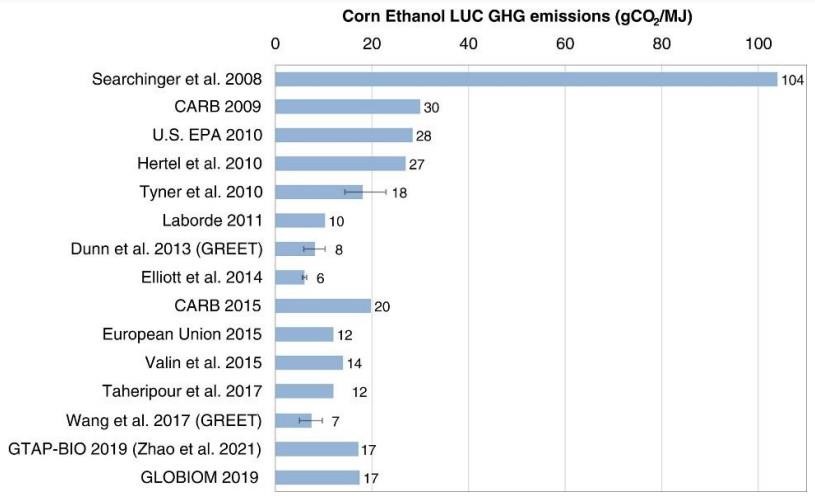
It's not 2008 – the modelers (and models) have gotten smarter. Mr. Grunwald cites a 2008 analysis conducted by Tim Searchinger to buttress his case for biofuel-induced land conversion. The hard part about modeling land use change is accounting for market response. If you assume, as Searchinger did, that more biofuel demand requires more corn planting and that corn planting will occur on newly converted land, then your model will produce large carbon impacts. But if biofuel demand is met with higher yields and crop-switching, then the agricultural footprint doesn’t change and the carbon impacts, if any, are very small. In essence, Searchinger engineered an outcome to make an important point: that policymakers must be careful about knock-on effects. This is true for all energy types. But the resolution of the 2008 modeling is low and obsolete (assuming scientific integrity was ever the point). Mr. Grunwald doesn’t even mention the dozens of studies that have looked at the same question since 2008, with the more recent ones benefiting from 20/20 hindsight (i.e., the ability to root its conclusions in observed land use patterns during 2008- 2022 biofuel growth rather than uncertain forecasts produced by economic models). These higher resolution models have more data at their disposal and are more adept at accounting for dynamic market variables. The body of evidence shows that U.S. biofuel market growth has come without the land use change consequences claimed by Mr. Grunwald.
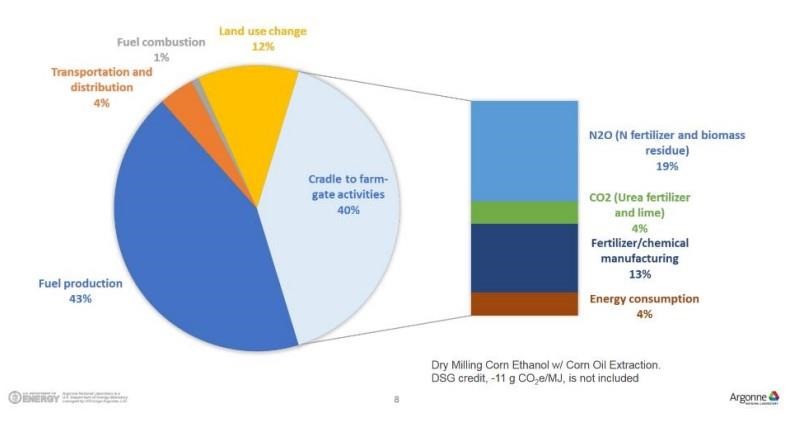
Land use is accounted for by today’s carbon models. In The Guardian’s EV hit piece, Rowan Atkinson (yep, Mr. Bean) explores upstream EV production emissions as if he’s unearthing something overlooked by climate science. As absurd as that is, Mr. Grunwald does the exact same thing. Mr. Grunwald contrasts land use change with other “fairly well-known” impacts and says “[EPA] could at least tweak its own approach to take land use more seriously in its emissions analyses.” This premise is pure fiction. The U.S. Department of Energy’s GREET model, the global gold standard for carbon modeling, ascribes 52 percent of the GHG footprint of biofuels to feedstock production and land use. The models used by EPA, U.S. DOE, and the California Air Resources Board – each of which show significant climate benefits from displacing oil with biofuel – all penalize biofuels for two types of land use impacts: direct land use (feedstock production) and indirect land use change (theoretically induced by more biofuel production in the global marketplace). While all energy has induced carbon effects, not a single other clean energy solution – nor petroleum itself – is debited for induced market effects by lifecycle carbon accounting regimes anywhere in the world. But with biofuels, those effects are a core part of the calculus. How we arrived at a place where biofuels assessed for two categories of carbon emissions are compared to petroleum and all other energy types only assessed for one is a good question. But the notion that land use impacts are overlooked in modern carbon accounting for biofuels is absurd. It’s just the opposite.
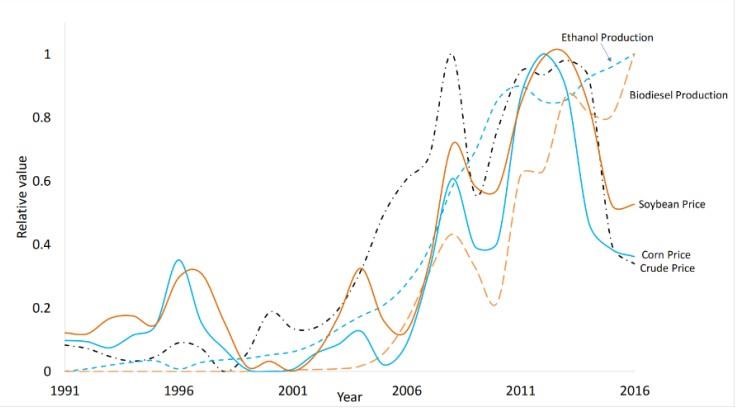
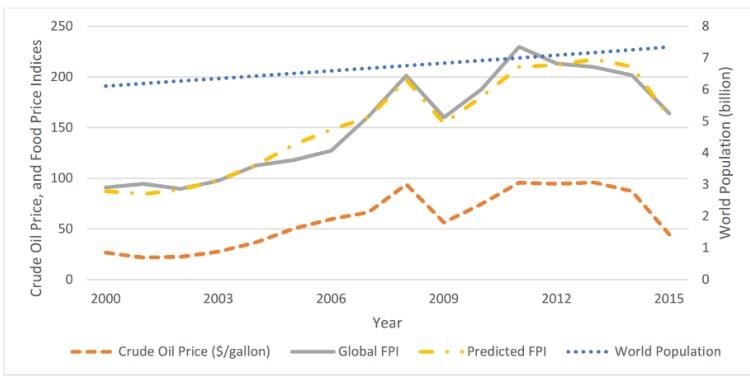
The correlation between food prices and biofuel production is poor; the same cannot be said for food prices and oil prices. If Mr. Grunwald is writing a book about feeding the world, he shouldn’t be indulging in myths about biofuel and food. The total farm share of each consumer dollar spent on food is ~15 cents (with ~85 cents expended on processing, transportation, and marketing), and grain price is only a fraction of the 15 cents. So, if the farm gate share of bread at retail (~$0.04 per dollar) increases by 50 percent, that’s 2 cents. Ironically, Mr. Grunwald’s vision could exacerbate food price inflation. Less biofuel use would increase oil demand. Peerreviewed studies have found a much stronger correlation between oil/corn/soy prices than biofuel/corn/soy prices (see charts). And while a comparison of biofuel and food prices shows poor correlation, the correlation between oil price and food price (FPI) is much stronger - and near perfect when oil prices are high due to the impact of high oil prices along the food supply chain, and as a driver for speculation by commodity index funds and exchange traded funds. Mr. Grunwald has every right to prefer a future without biofuels. He has every right to defend the planet using the same scorched earth media tactics deployed by the climate deniers that swarmed to his Twitter feed to celebrate his biofuel missive. But in this case, he’s just wrong. Stable demand for biofuels has helped a shrinking agricultural sector to invest in new technologies and strengthen productivity without land expansion. Conversely, Mr. Grunwald’s plan would accelerate the loss of American farms, reduce our ability to meet the needs of a growing population, and serve to further consolidate the farm sector into fewer hands and less diverse geographies, leaving us even more exposed to high food prices and natural disasters. The Biden Administration sees American biomanufacturing as part of a modern American industrial and climate strategy that will support green jobs. Key decisionmakers believe that this is the moment to crack the code on the commercial deployment of biotechnology and climatesmart agriculture. They were right to chart this course. Now it’s time to cut through the noise. Brooke Coleman is the Executive Director of the Advanced Biofuels Business Council (ABBC)
Click here to see more...